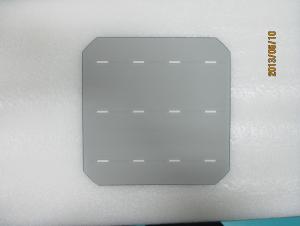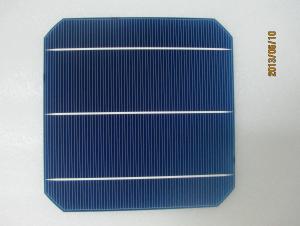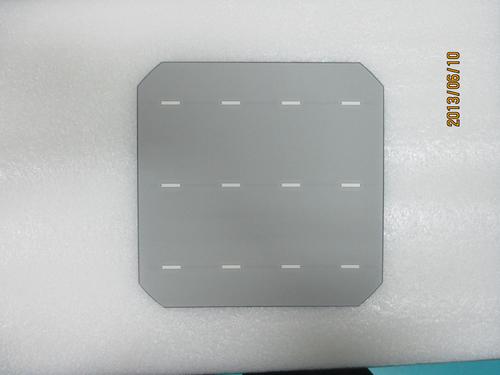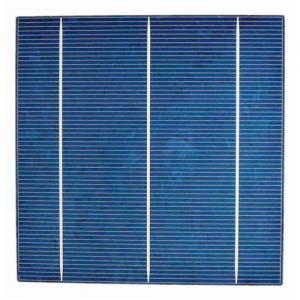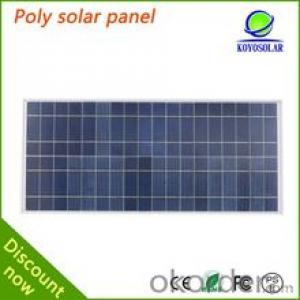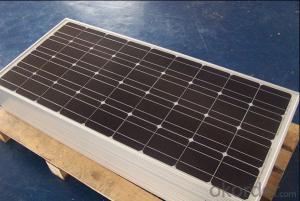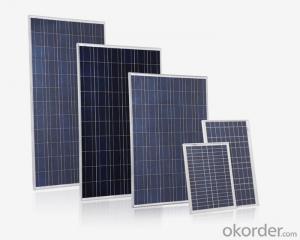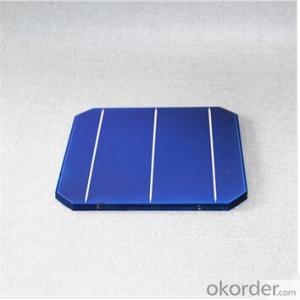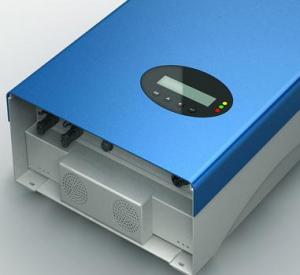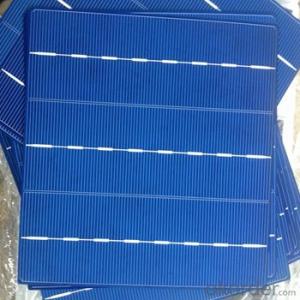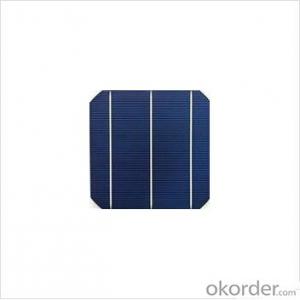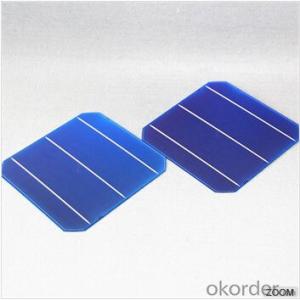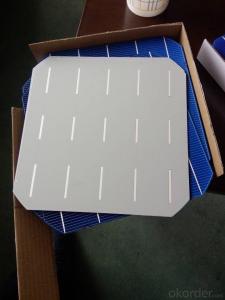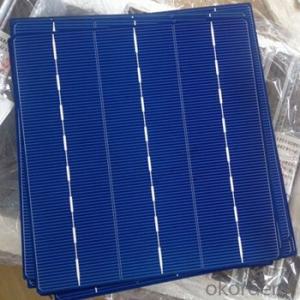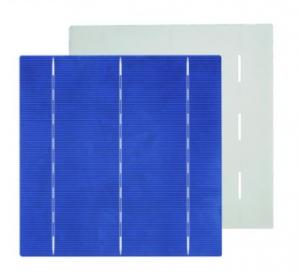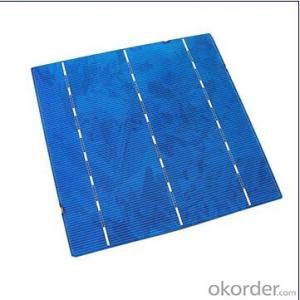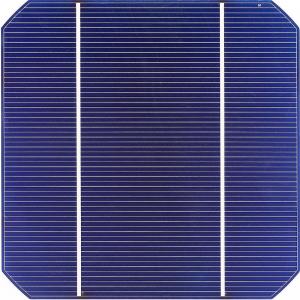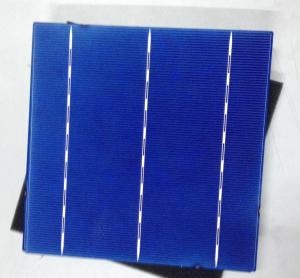Fourth Generation High Efficiency Monocrystal Solar Cell
- Loading Port:
- Shanghai
- Payment Terms:
- TT or LC
- Min Order Qty:
- 1000 pc
- Supply Capability:
- 2000000 pc/month
OKorder Service Pledge
OKorder Financial Service
You Might Also Like
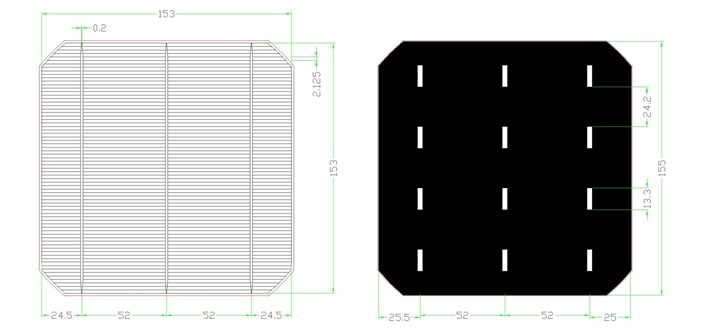
MONOCRYSTAL SOLAR CELL
type:156M
appearance:156×1565㎜±0.5mm;diagonal:R=100mm
Main fence wide:1.5mm back electrode wide:2.8mm
Fence line qty:90
Cell thickness:220±20
Eff(%) | 17.70- 17.80 | 17.80- 17.90 | 17.90- 18.00 | 18.00- 18.10 | 18.10- 18.20 | 18.20- 18.30 | 18.30- 18.40 | 18.40- 18.50 | 18.50- 18.60 | 18.60- 18.70 | 18.70- 18.80 | 18.80- 18.90 |
Pm(W) | 4.23 | 4.25 | 4.28 | 4.30 | 4.33 | 4.35 | 4.37 | 4.40 | 4.42 | 4.44 | 4.47 | 4.49 |
Isc(A) | 8.68 | 8.69 | 8.70 | 8.71 | 8.73 | 8.76 | 8.77 | 8.78 | 8.82 | 8.83 | 8.85 | 8.86 |
Im(A) | 8.13 | 8.15 | 8.17 | 8.19 | 8.21 | 8.24 | 8.26 | 8.30 | 8.33 | 8.35 | 8.39 | 8.42 |
Voc(V) | 0.626 | 0.627 | 0.628 | 0.630 | 0.631 | 0.632 | 0.633 | 0.634 | 0.634 | 0.635 | 0.636 | 0.637 |
Vm(V) | 0.522 | 0.523 | 0.525 | 0.527 | 0.528 | 0.529 | 0.531 | 0.531 | 0.532 | 0.534 | 0.534 | 0.535 |
FF(%) | 78.1 | 78.3 | 78.5 | 78.6 | 78.7 | 78.8 | 79.0 | 79.2 | 79.3 | 79.5 | 79.6 | 79.8 |

FACTORY PICTURE OF SOLAR CELL
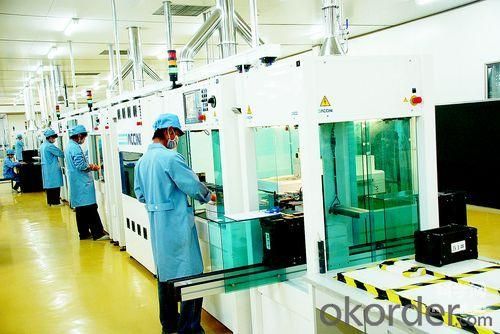
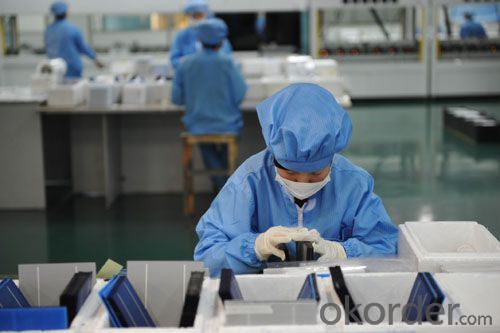
FAQ
We have organized several common questions for our clients,may help you sincerely:
What’s price per watt?
A: It’s depends on the quantity, delivery date and payment terms of the order. We can talk further about the detail price issue. Our products is high quality with lower price level.
Can you tell me the parameter of your solar cells?
We have different series of cells with different power output, both from c-si to a-si. Please take our specification sheet for your reference.
How do you pack your products?
We have rich experience on how to pack the panels to make sure the safety on shipment when it arrives at the destination.
Can you do OEM for us?
Yes, we can.
How long can we receive the product after purchase?
In the purchase of product within three working days, We will arrange the factory delivery as soon as possible. The perfect time of receiving is related to the state and position of customers. Commonly 7 to 10 working days can be served.
- Q: How do solar cells perform in areas with frequent thunderstorms?
- Solar cells can still perform efficiently in areas with frequent thunderstorms, although their performance may be affected during periods of heavy cloud cover or rainfall. Thunderstorms can temporarily reduce sunlight exposure, leading to a decrease in solar cell output. However, solar cells are designed to withstand various weather conditions, and their performance can quickly recover once the storms pass. Additionally, advancements in solar technology, such as the use of anti-reflective coatings and improved cell designs, help to enhance performance even in less ideal weather conditions.
- Q: What is the impact of wind on solar cell efficiency?
- The impact of wind on solar cell efficiency is generally minimal. While strong winds can cause slight vibrations in solar panels, it does not significantly affect the overall efficiency of the cells. In fact, a gentle breeze can even help to keep the panels cool, preventing overheating and potentially improving their performance. However, extreme winds or storms can pose a risk of physical damage to the panels, which could impact their efficiency if not properly addressed.
- Q: How do solar cells perform in high altitude regions?
- Solar cells perform well in high altitude regions due to several factors. Firstly, at higher altitudes, there is typically less atmospheric pollution, which means that the sunlight reaching the solar cells is relatively cleaner and more intense. This allows solar cells to generate more electricity. Additionally, high altitude regions often have lower temperatures, which can enhance the performance of solar cells as they operate more efficiently in cooler environments. Lastly, the reduced air density at higher altitudes can result in less scattering of sunlight, further increasing the efficiency of solar cells. Overall, the combination of cleaner sunlight, cooler temperatures, and reduced scattering make solar cells highly effective in high altitude regions.
- Q: Are solar cells affected by electromagnetic interference?
- Yes, solar cells can be affected by electromagnetic interference (EMI). EMI refers to the disturbance caused by electromagnetic radiation on electronic devices, including solar cells. The interference can lead to reduced efficiency and performance of the solar cells. Shielding techniques and proper grounding can be employed to mitigate the impact of EMI on solar cells.
- Q: Can solar cells be used for powering irrigation systems?
- Yes, solar cells can be used for powering irrigation systems. Solar energy can be converted into electricity through solar cells, which can then be used to power irrigation pumps and other components of the irrigation system. This provides a sustainable and environmentally friendly way to meet the energy needs of irrigation systems, especially in remote areas or regions with limited access to the electricity grid.
- Q: How do solar cells affect the value of a property?
- Solar cells can significantly increase the value of a property due to their ability to generate clean and renewable energy. The presence of solar panels can enhance the property's appeal, lower energy costs, and potentially provide a source of income through net metering or selling excess energy back to the grid.
- Q: How much energy can a solar cell produce?
- The amount of energy a solar cell can produce depends on various factors such as its size, efficiency, sunlight intensity, and duration of exposure. On average, a standard solar cell can generate around 200 to 300 watts of power per square meter under optimal conditions. However, advancements in technology are continuously increasing the efficiency and power output of solar cells.
- Q: What are the safety considerations when installing solar cells?
- Some safety considerations when installing solar cells include proper handling and installation of the panels to avoid any physical injuries, ensuring the electrical connections are secure and properly insulated to prevent electric shocks or fires, and following necessary protocols and guidelines to protect against potential hazards such as falls from heights or exposure to harmful chemicals. Additionally, it is important to have a qualified professional install the solar cells to ensure compliance with local building codes and safety standards.
- Q: Can solar cells be used in powering e-bikes?
- Yes, solar cells can be used to power e-bikes. Solar panels can be installed on the e-bike to convert sunlight into electricity, which can then be used to charge the e-bike's battery. This allows for a sustainable and renewable source of energy to power the e-bike, reducing reliance on traditional electricity sources.
- Q: How are solar cells installed on rooftops?
- Solar cells are typically installed on rooftops using a mounting system that secures the panels in place. This involves attaching metal brackets or rails onto the roof, which act as the support structure for the solar panels. The panels are then placed onto these brackets and secured using clamps or screws. The installation process requires careful positioning and alignment to ensure maximum sunlight exposure for efficient energy generation.
Send your message to us
Fourth Generation High Efficiency Monocrystal Solar Cell
- Loading Port:
- Shanghai
- Payment Terms:
- TT or LC
- Min Order Qty:
- 1000 pc
- Supply Capability:
- 2000000 pc/month
OKorder Service Pledge
OKorder Financial Service
Similar products
Hot products
Hot Searches
Related keywords
